Hollywood City Guide
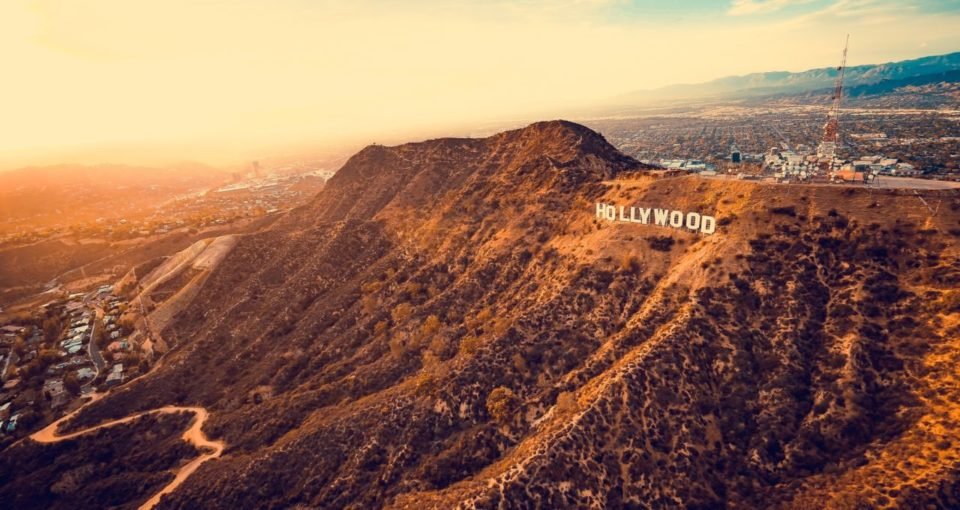
As the home to one of the most iconic city backdrops, Hollywood has a hard time keeping up with the hype. Though clear efforts have been made to pave the sidewalks with bronze stars, Hollywood’s fate is largely determined by the global demand for entertainment. The full breadth of American society fills the spaces between, unwelcome in next door City of Beverly Hills which slams a door shut on Hollywood’s eastern frontier. But it’s taken the most recent interest in health for the foothill neighbourhood to acknowledge its prospects for running and cycling, now uplifted by a renewed demand for production thanks to the optimism of streaming services.
To make the most of this Hollywood City Guide, note two patterns within this post. The first concerns sections, which follow in this sequence:
The second pattern is to do with the detail on each venue. Exact hours aren’t indicated alongside venues unless very restrictive or seasonal, and prices are also omitted in the knowledge that no listed facility charges more than $25 for day access. Instead, a full directory of telephone numbers is provided in the final Directory section, so you can call ahead to confirm your intended training time. The place names in the Directory link to the venue’s Google Maps profile – click on the venue’s name to generate directions with the actual app.
Orientation & Logistics
The municipal boundaries that contain Hollywood can be lumped together with those of West Hollywood and Sunset Strip which reach out to the west before the City of Beverly Hills starts. Two main boulevards staple these three areas together, Sunset and Hollywood which run parallel to each other at the base of the hillside which has roughly guided the area’s development. Depending on where you set as the centre Hollywood’s footprint, the neighbourhood lies roughly 10 miles inland from the Santa Monica & Venice, and four miles north of Downtown Los Angeles (DTLA), three waypoints which span the most notorious sectors of Los Angeles County.

Getting around Los Angeles is problematic, even outside of regular rush hour traffic. The lack of rapid links on metropolitan public transport are exacerbated by growing private car ownership, and the simple fact that the city resembles more closely a massive suburb thanks to its vast sprawl. Uber Pool is the most advanced option for tourists who don’t have their own vehicle and still want to plough a line from Hollywood to the beach at Santa Monica.
Taking an interest in LA Metro would however be a gesture of solidarity – there is a concerted effort to make improvements and bolster the value of the durable plastic TAP card, available for purchase at metro stops. Measure M is the campaign to bring Los Angeles public transit system into the 21st century, with 2028 Summer Olympics providing a suitable day of judgement. Here’s the Metro Map to see what’s feasible by rail.
Los Angeles has a desert-like climate, with dry hot summers and warm winter days with cold nights. The lack of humidity means summer evenings are usually warm-to-cool, while winter night time temperatures hover around 8°C (46°F) from December through February. Sea temperatures in the winter hang around 15°C (59°F), rising as high as 25°C (77°F) by the end of the summer. On the Winter Solstice, sunrise is around 6:55am, sunset taking place at 4:48pm.
Running
For all the pleasures of the beachwalk in Santa Monica, Hollywood’s backyard of Runyon Canyon and Griffith Park offer enviable comparisons, free from cruiser bikes and ambling tourists. Though Hollywood can feel more urban, especially when it comes to finding continuous runs on flat surfaces, a pair of athletics tracks offer something pan flat and measured, while those looking to train with more resistance can easily hop up the neighbouring hills above the street level traffic.
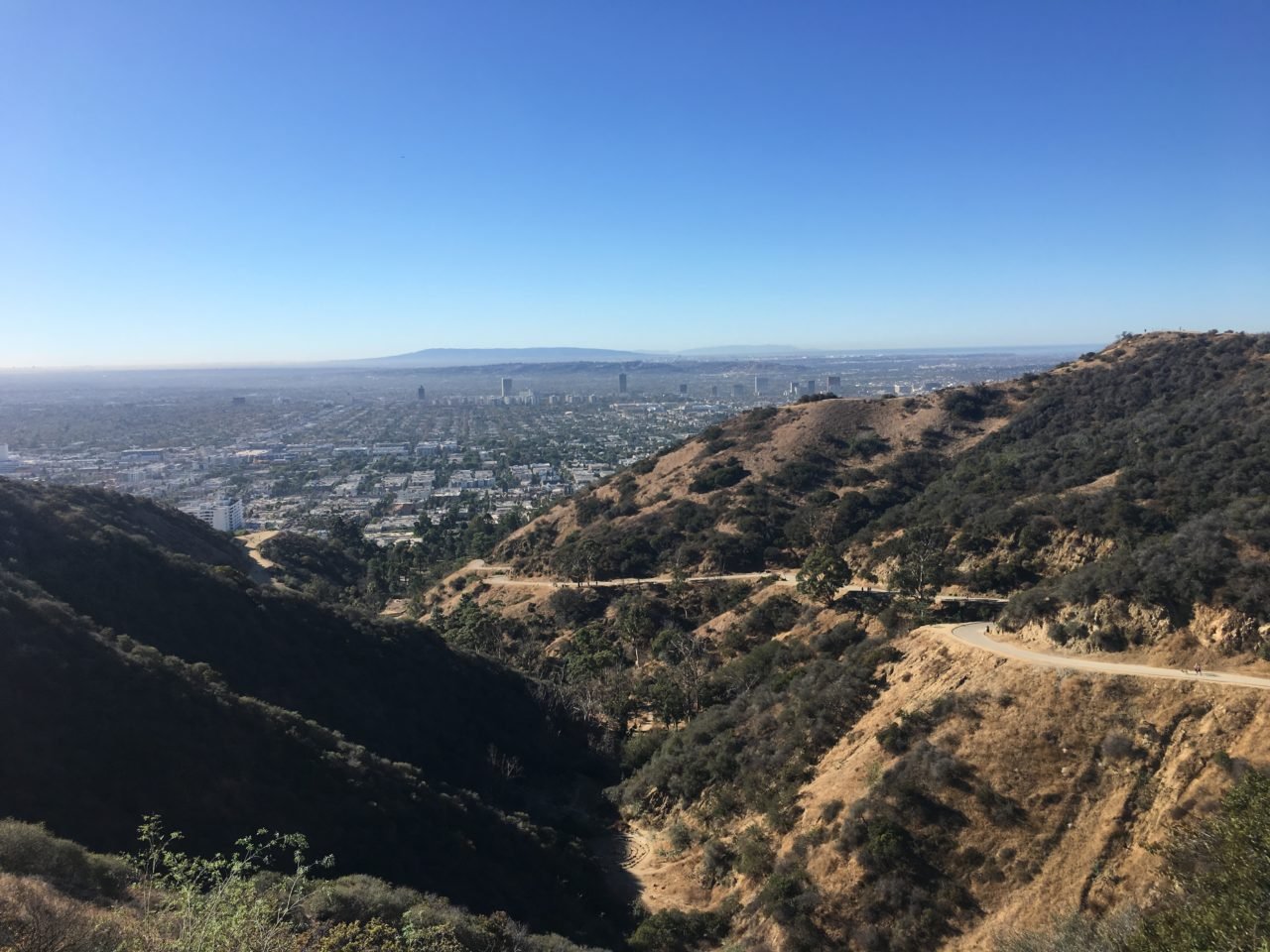
Those looking for flat routes immediately out of their hotel are forced to bite the bullet and use Sunset or Hollywood boulevards. The Los Angeles Marathon route does use these roads, but the stop-start element is irritating. To get around this, make a trip to the Reservoir within the Lake Hollywood Open Space where a 5km perimeter route is absent of traffic and intersections – find the full loop as a segment on Strava, noting the significant amount of elevation change.
Fortunately there are two athletics tracks which the public can use, at Hollywood High School and over at Fairfax High School, better for those basing themselves out of West Hollywood. Pay attention to track hours, which are updated occasionally on their websites, or use the Directory section below to call the schools ahead to confirm availability during your workout hour.
The horseshoe-shaped loop of Runyon Canyon welcomes a variety of active Los Angeleans setting out for their morning hikes (photo above). Those looking for a relaxed run with a solid surface underfoot can use the tarmac strip to the west of the canyon. Note that the more intrepid and somewhat restless hikers take on the hill’s crest via an eastern stairway and the steeper ascent to the top. The route is marked down as just over 3.5km on Strava if you hike the full length of Runyon Canyon and return back again.
If you’re looking to run hill intervals, make it to the top of the Runyon Canyon then dissect this 800m strip of road – the rest of the route is popular among local walkers and will have you held up during a swift ascent. You’ll see a tarmac crossroads at the top, from where you can turn left and head further away from town.
Those with enough time on their hands should hop across the 101 to Griffith Park where vast amount of terrain opens up, arguably Los Angeles’ most verdant oasis and an excellent way to justify a Hollywood stay to your athletic friends. See the photo below to get a feel for the extent of trails to the east of the Hollywood sign.
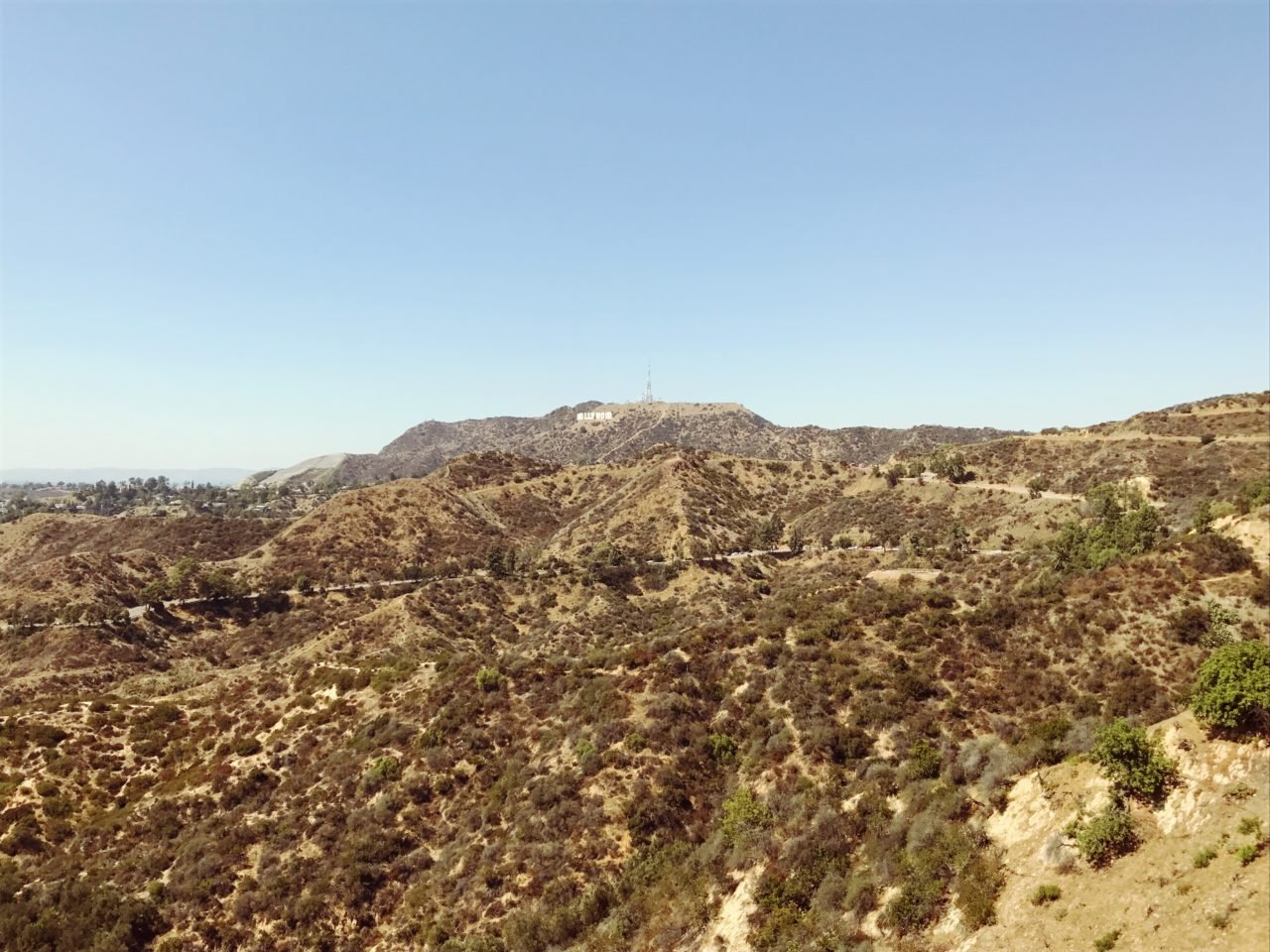
One way of navigating Griffith Park on foot is to start at The Trails Cafe (no website) on Western Canyon Road, heading onto the trail on the opposite side of the road. Head up West Observatory Road to the Griffith Observatory, an unmissable structure which overlooks Los Angeles to the south. This 1.3km / 11% segment gets you to the Observatory viewpoint, from where you can continue north to Mount Hollywood via Fire Road Climb. By the time you’ve reached the top of Mount Hollywood, you will have reached the second highest summit in Griffith Park (496m / 1625 feet). Return via Griffith Observatory to The Trails Cafe to complete a 9km route.
Any time spent running around Hollywood can be enough to get distracted and veer off-track in pursuit of the less savoury operations in the sea. A social running group that meets at set times is ARC RUN CLUB L.A. who set out on runs along Runyon Canyon, Hollywood and Griffith Park on Tuesdays, Thursdays and Saturdays. Find their upcoming runs on Strava and join where it works with your schedule.
Cycling
Cutting up the coast on the 101 is the simplest way to reach very good, undisrupted riding from Hollywood or anywhere within the east side. Cyclists can, however, reach a good compromise by making through Griffith Park, or else head up Mandeville Canyon for hill intervals.
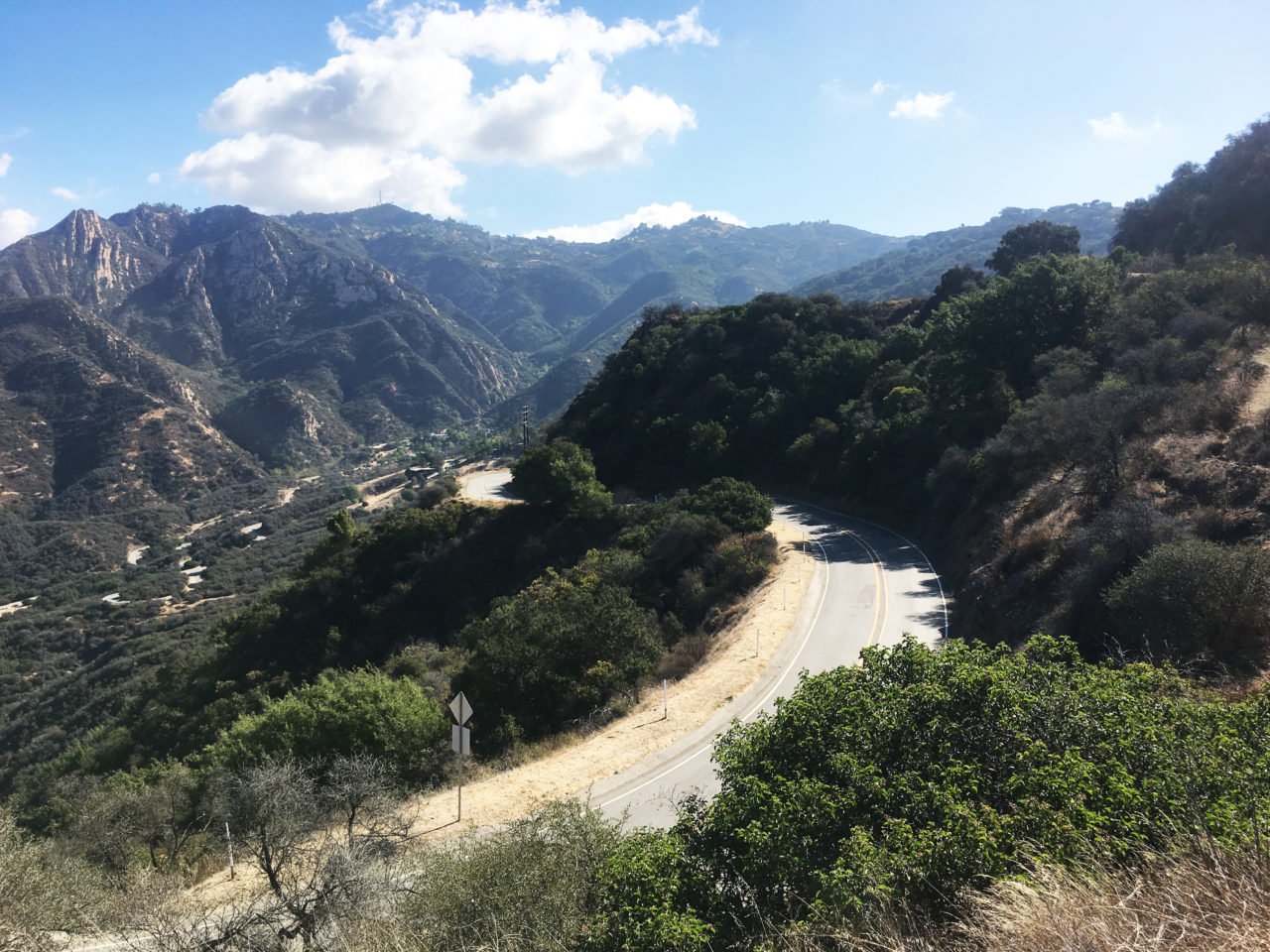
Big groups are well versed with the 101 – the shoulder is wide and a sequence of a few traffic lights means you can keep the ride together until you start on the climbs. The climbs start fairly suddenly, doing their best to work through or around the Pacific-facing hills in the Santa Monica Mountains. Among the most popular are “Canyon Roads” Topanga, Tuna, Las Flores , Malibu and Latigo, jutting up to right after The Getty Villa, in this order from south to north. This sequence of roads also informs some possible descents, but note that Tuna is a one-way street, available to descenders only.
If you were to choose one entire route to get yourself orientated: head up the coast, stopping at Malibu Farm Cafe as you start to roll into Malibu proper. After grabbing a coffee and snack, continue in the same direction, first taking a right on the discreet Webb Way, then the first left to get your onto Malibu Canyon Road. This will guide you up into the mountains with some traffic moving fast without a huge shoulder. Brave this until Piuma Road where you can take on a delightful bunch of hairpins up to the fire station at the top of Las Flores, signposting your descent to sea level and return to Santa Monica. In total, this route will clock you nearly 65km and 1000vm – see the full Strava readout.
Forgetting Malibu and focusing on the city a little more: Mandeville Canyon starts out in Brentwood and continues for 8 kilometres at an average incline of 3%. The road dead ends at the base of San Vicente Mountain so you’ll have to enjoy returning back on yourself for the descent, or even take a right onto Westridge and complete another climb before your final descent on the 25km full loop.
Those staying on the east side of Los Angeles are gifted with the hilly roads of Griffith Park where decent riding can be had in loops. At the south end of the park is Ferndale Ascent (2.2km / 4%) which passes by Griffith Observatory (photo below). Western Canyon Road links with the top of E Observatory Left where a left can be taken to continue up Mount Hollywood Drive (2.6km / 4%). A highly contested climb heads up Mount Hollywood in the other direction, covering nearly 2km at 6%.
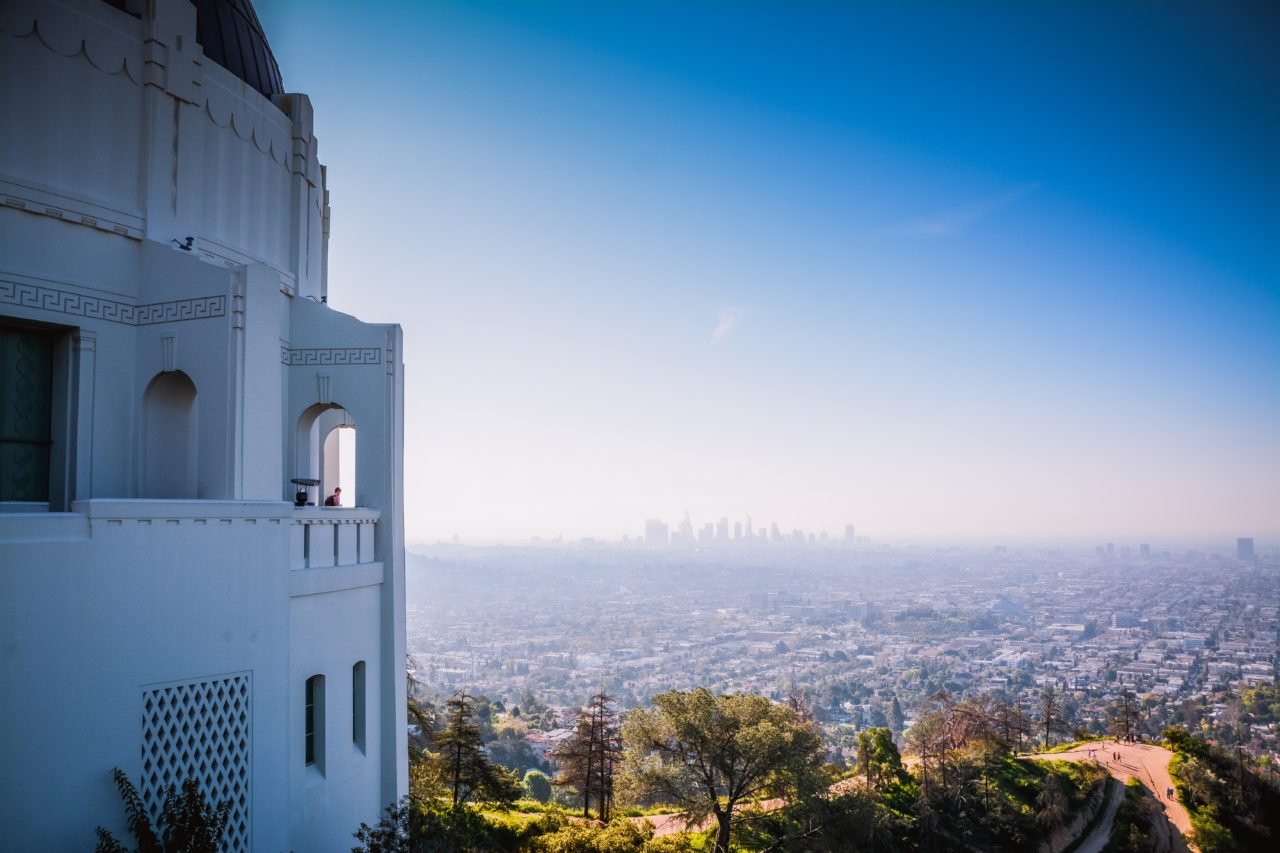
Local artist and cyclist Barry McWilliams had brought together an excellent map documenting the hotspots for cycling in Griffith Park (zoom in on the annotations for additional context).
If you’re prepared to make visits to Santa Monica and Venice, then bike rental options goes three ways Either you join the Rapha Cycle Club (RCC) for $200 per year and rent a Canyon from their fleet, or you look to two other providers in the area, Helen’s Cycles and Cynergy Cycles. Whereas Rapha offer brilliant service with a simple check-out procedure and consistency of product, Helen’s and Cynergy have more expensive daily rentals and much stricter deposit process.
Indoor cycling in Hollywood is best had at Flywheel Sports in West Hollywood. Bring your own cleats and shoes or else rent them from the venue.
Alternatively, have a bike delivered to your hotel by Synaptic Cycles who stock premium road bikes for visitors to the Los Angeles areas. Daily rates aren’t cheap, but multi-day rental soon makes a good deal of sense – you’re getting Calfee, Focus and Volagi bikes after all.
Swimming
Considering Hollywood’s distance from the beach, it’s worth noting a couple of places to cool off during the day. Outdoor swimming is open year-round, and only in the depths of winter will you need to consider the cold around early morning swims.
Two pools that work well for lengths are Hollywood Pool and West Hollywood Aquatics Center. Hollywood Pool is 25m in length, and three miles west along Santa Monica Boulevard is the 25-yard pool at West Hollywood Aquatics Center, a more advanced facility.
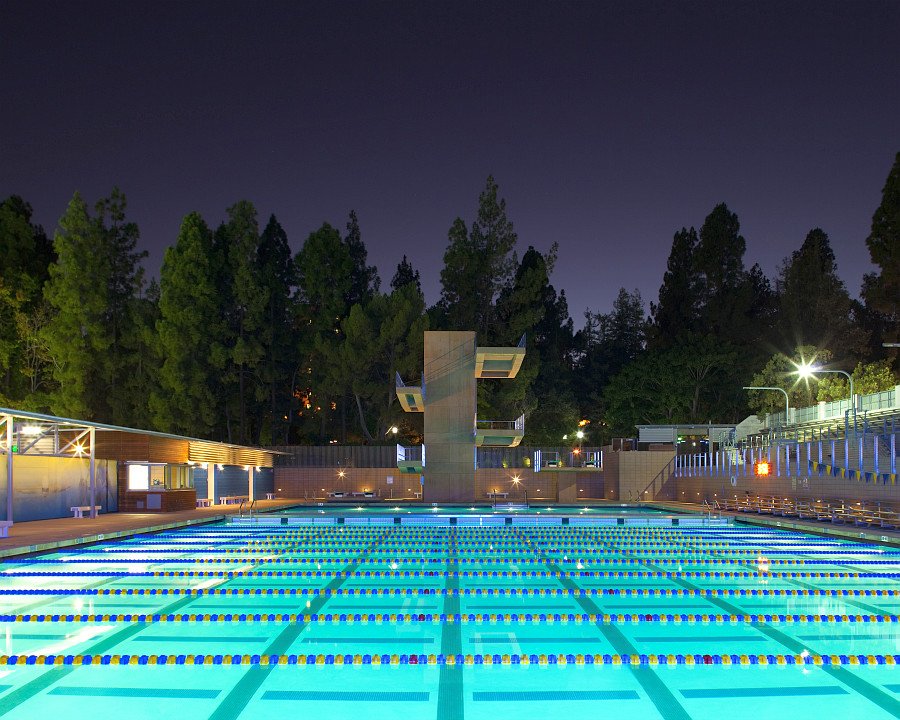
A 30-minute / 8-mile drive down Sunset Boulevard gets you to Spieker Aquatics Center, the location of Dirks Pool, a 50m tub that is part of University of California, Los Angeles, well worth the visit if you’re into sports infrastructure at the college level. Unfortunately, U.C.L.A.’s sports facilities aren’t widely accessible – only guest of members, students and alumni are able to get into the facilities. There is one workable way around this – subscribe to Blue membership for a year. This covers your daily drop-in fee, which includes access to four other pools as well as the running track (Drake Stadium) and gym (see U.C.L.A.’s full range of facilities). Purchase your your membership online by making a donation, then get hold of you your recreational passes at the John Wooden Center in Westwood Plaza once you’re on campus.
You’ll also find groups going swimming in the Pacific 12 months of the year. Tower 26 are a prestigious swimming group who have an open water workout on Wednesday mornings at 6am from May through October opposite tower #23, roughly one mile south of Santa Monica Pier. Their early morning, mid-morning and evening sessions cater for any schedule, taking place at Palisades High School. If you are looking to join Tower 26 for their open water or pool sessions, contact Coach Gerry Rodrigues to flag your interest, indicate your swimming background and goals. The drop-in costs for sessions is $20.
Gym
Those staying in Hollywood can wander down to Gold’s Gym which is well equipped, if removed from its ancestor down the road in Venice. They do towel service, and have a free pass option for first-timers – claim it on their website and see the photo below for a feel for their spacious interiors. In West Hollywood is Crunch on Sunset Boulevard, less prestigious than Gold’s but nonetheless, towel service is also available and hours are broad throughout the week.

You would be forgiven for visiting Barry’s Bootcamp for a barbells and treadmill workout – an absolute requirement for any visit to Los Angeles. Barry’s run-lift-run-lift sessions last just over 40 minutes and take place beneath dimmed lighting to the sound of Los Angeles’ latest motivational playlist (instructor’s discretion). Though their workouts could easily be compared with indoor cycling classes that include extra weights and acrobats, they actually lead to genuine progression if you go with the approach that absolute failure isn’t the name of the game. But as for any forays into Hollywood’s CrossFit and boxing rings – count them out unless you have a membership.
Sleeping & Eating
Hollywood’s hotels have gone through waves of success and failure, from the regal and classy, to the seedy and to be avoided. Updates to some of the area’s legacy buildings has added some tasteful contributions, usually bolstered by a scattering of healthy eateries and coffee shops in the neighbourhood. Visitors will need to make the choice between staying in Hollywood or West Hollywood, with three hotels covering the range of needs.
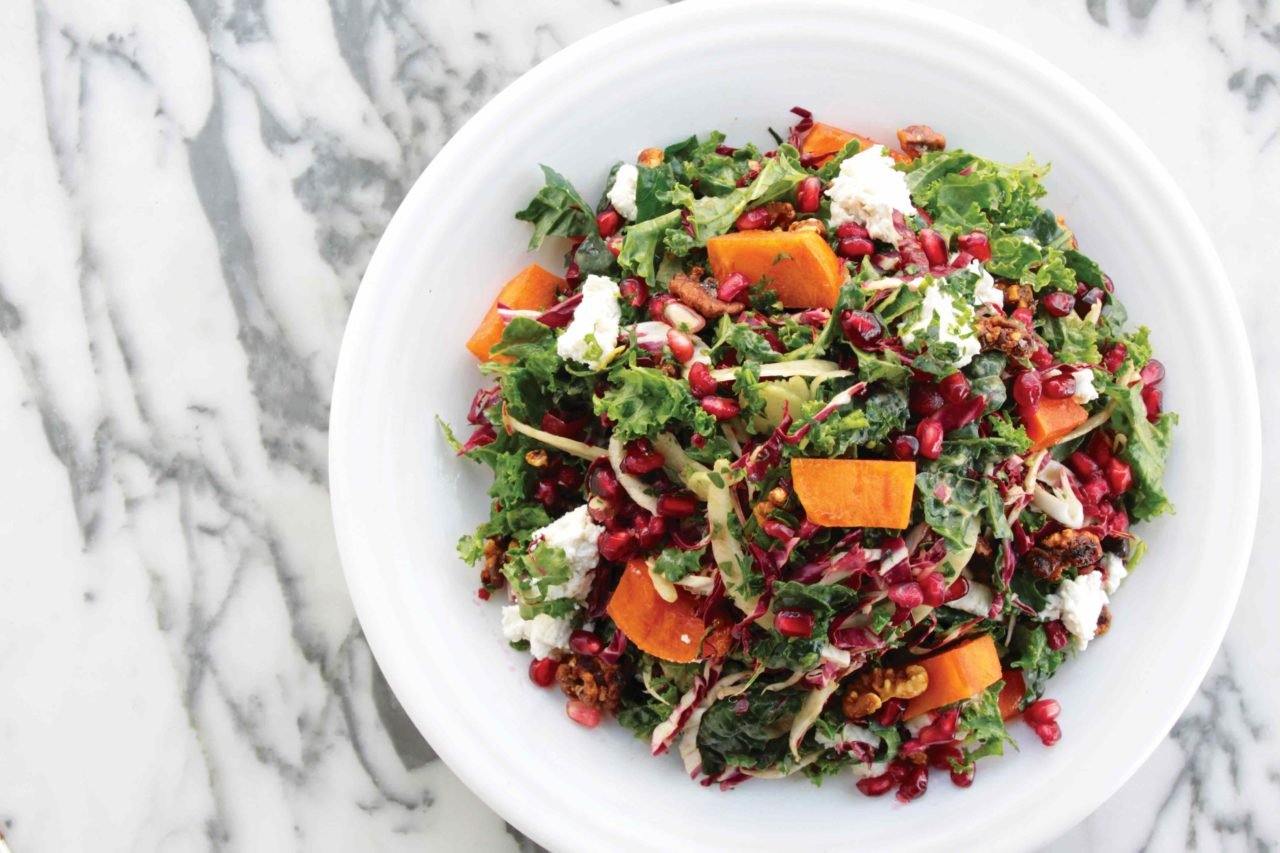
Visitors to Los Angeles should take time to bookmark the various Cafe Gratitude venues that dot the city, a total of seven have opened to date. Gratitude verges on being a cult thanks to its signature way of ordering food using positive moods and adjectives, substitute titles for all their meals and drinks. For example, I’m Thriving and Dazzling = I would like to order the chef’s seasonal soup and the kale Caesar salad. There is one venue in Beverly Hills to the south of Santa Monica Boulevard and another in Hollywood at Melrose Avenue.
Located on Melrose Avenue between Hollywood and Beverly Hills, Spartina pride themselves on being Cal-Italian, meaning that pizzas, pastas and salads come infused with something from the Pacific coast. In West Hollywood, Norah updates its menu each week within the domain of New American cuisine, while Baroo dishes out inventive Korean recipes on Santa Monica Boulevard near the 101 junction in Hollywood.
Coffee is available in abundance, with the following Hollywood spots being worth a visit: Tiago can be found half a mile from the trailhead to Runyon Canyon and Groundwork Coffee Co. is on Sunset Boulevard five blocks to the east. West Hollywood Hills is caffeinated by Alfred who have three venues in the area, Alfred Coffee in the Alley, Alfred Tea Room and Alfred Coffee Melrose Place, and Verve, the renowned roaster from Santa Cruz, California.
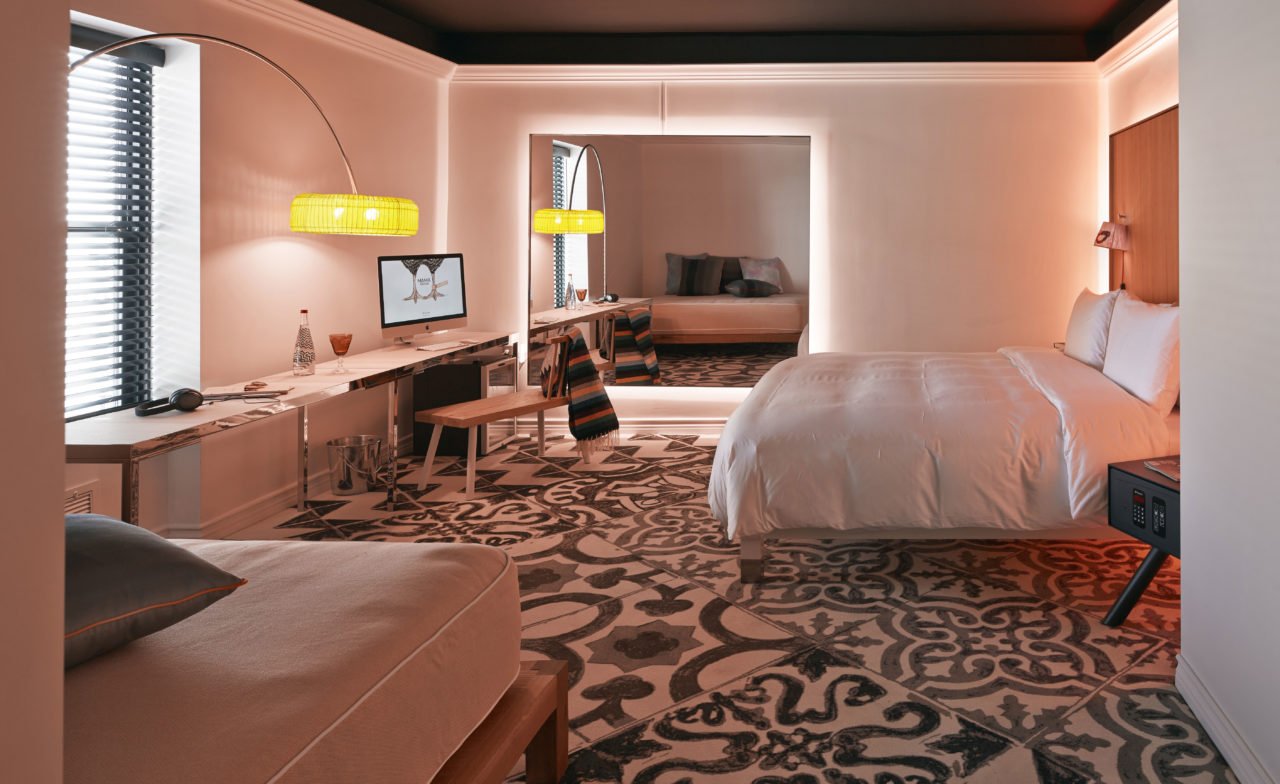
Hollywood’s Sunset Boulevard cuts a fine line between the glamorous and the ghastly, a contrast that boutique hotel Mama Shelter has essentially converted into a designer’s favourite dualism. Just look at the photo above to get a sense for the garish interior and red lighting, but take time to appreciate the refined characteristics of a simple bed and iMac which opens with the input of a four-digit passcode connects you to the Wi-Fi. Leaf through the printed screenplays, or wander to the rooftop bar to put your feet up.
Those staying for longer periods in Hollywood and looking for self-catering option can check into Proper Residences in Columbus Square. Their new high-rise venue (still a construction site on Google Maps), comes at a time when the world’s improved bandwidth has helped usher in a renaissance period for Hollywood’s producers, the recent beneficiaries of dollars from Netflix, Amazon and soon Apple. Proper serves as a handy retreat for out-of-town creatives, with a rooftop pool, restaurant and sundeck that can only be accessed by guests. The minimum booking length is seven nights.
Finally, The Standard serves as a good option for accommodation nearer Sunset Strip and West Hollywood. Their in-house restaurant, Croft Alley, combines a diner-style interior with the latest in organic food, ensuring you a strong immunity against the compelling live music scene that fills the venue on weekends at The Cactus Lounge and, notably at their music venue, Mmhmmm (sic).
Directory
Alfred Coffee in the Alley: 424-288-4126
Alfred Coffee Melrose Place: no number
Barry’s Bootcamp, Hollywood: 323-848-4761
Barry’s Bootcamp, West Hollywood: 310-360-6262
Cafe Gratitude, Beverly Hills: 424-389-1850
Cafe Gratitude, Hollywood: 323-580-6383
Fairfax High School: 323-370-1200
Groundwork Coffee Co.: 323-871-0143
Hollywood High School: 323-993-1700
Proper Residences: 323-465-7767
Verve, Hollywood: 310-385-9605
West Hollywood Aquatics Center: 323-848-6538
Email Will Ross (will@zafiri.com) with questions or comments, and have a browse of other Zafiri City Guides. This Hollywood City Guide was last updated in April 2018.